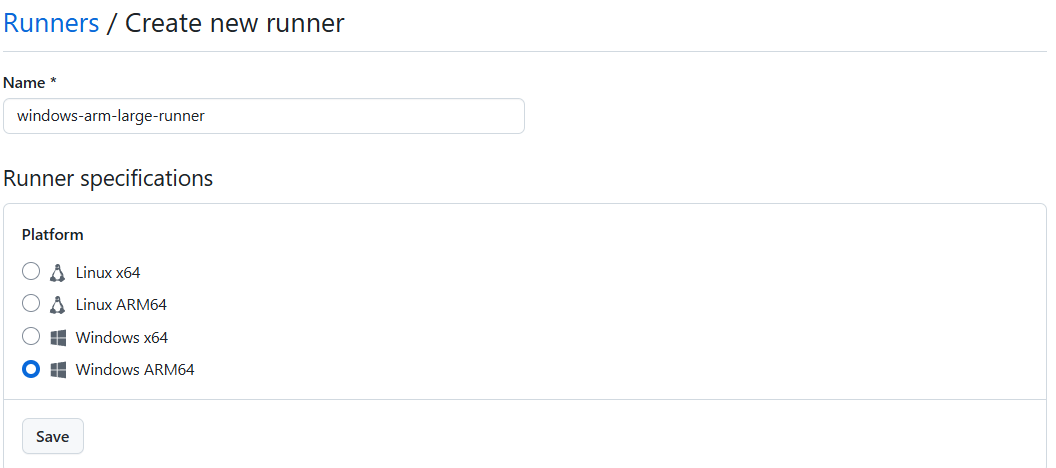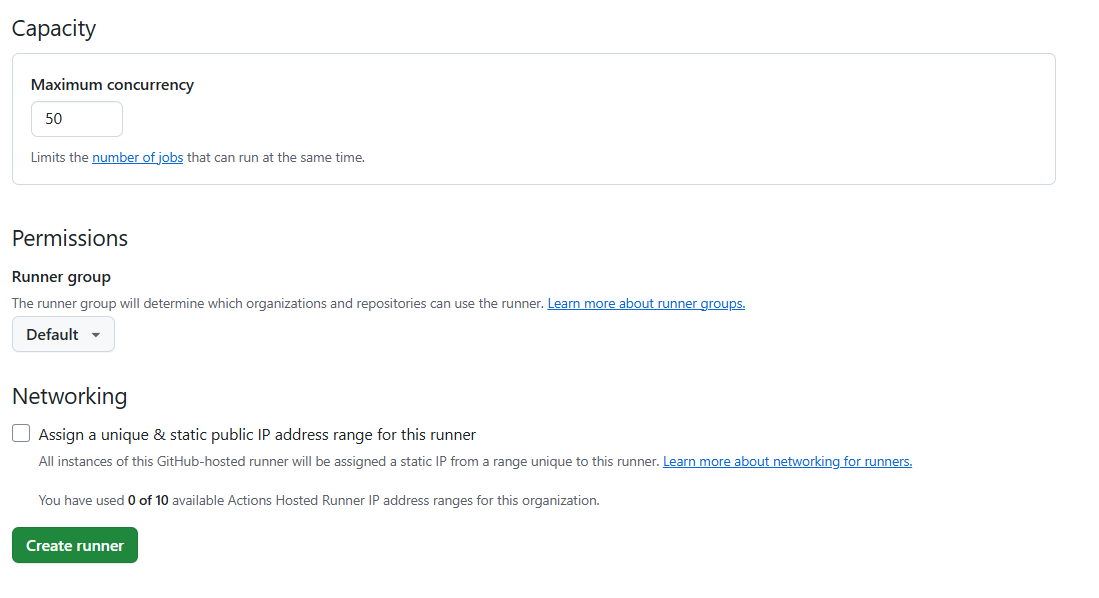Automate Windows on Arm Builds with GitHub Arm-hosted Runners
Introduction
Introduction to GitHub Arm-hosted Runners
Automate the Build of Windows Applications
Next Steps
Automate Windows on Arm Builds with GitHub Arm-hosted Runners
Overview
GitHub now supports Arm-hosted Windows runners, making it easy to run workflows on Arm hardware without managing infrastructure yourself. This Learning Path introduces what they are, how to use them, and how to configure your own larger runner.
What are GitHub Arm-hosted Runners?
Runners are the machines that execute jobs in a GitHub Actions workflow. An Arm-hosted runner is managed by GitHub and uses the Arm architecture, meaning you don’t need to provide a server to run Actions workflows. GitHub provides the system and runs the Action workflows for you.
GitHub Arm-hosted runners for Windows are now available in public preview, providing a powerful and efficient way to build, test, and deploy your Windows applications on Arm without the need for virtualization. These runners come with a Windows 11 Desktop image, equipped with many tools to get started with your workflows.
Arm-hosted runners are available for public repositories at no cost, subject to standard usage limits .
How Do I Use GitHub Arm-hosted Windows Runners?
To leverage the GitHub Windows Arm64 hosted runners, you need to use the following label in your public repository workflow runs:
runs-on: windows-11-arm
This label does not work in private repositories - the workflow will fail if you use it.
What Types of GitHub-hosted Runners Are Available?
GitHub offers two types of hosted runners: standard and larger runners. Larger runners give you more control—you can configure the amount of RAM, number of CPUs, and disk space. You can also use the Windows 11 Desktop Arm Image with larger runners. To use this image on larger runners, you will need to create a new runner.
How Do I Create a Larger GitHub Arm-hosted Windows Runner?
Arm-hosted runners are created at the organization level.
Navigate to your organization and select the Settings tab. On the left pane, select Actions->Runners.
On the Runners page, select the New runner drop-down on the top right, and then select New GitHub-hosted runner.

Specify a name for the runner. This name is used in the runs-on field in your workflows, so make it clear for others who use it.
Choose Windows ARM64 for the platform and click Save.

Specify the operating system image for the runner, select Microsoft Windows 11 Desktop by Arm Limited, and click Save.

Select the size of the larger runner you need and click Save.

The Capacity section includes the maximum concurrency, which is the number of jobs to run at the same time.
You can also set the runner group for this runner. The runner group controls this runner’s settings. You may need to return to the group if configuration changes are required.

Finally, click Create runner.
Your new Arm-hosted Windows larger runner is ready to use. Remember the runner name so you can use it in your workflows with the runs-on label.
How Do I Check the Server Hardware Used by the Arm-hosted Windows Runners?
The Arm-hosted runners are powered by Microsoft Azure Cobalt 100 processors, based on the Arm Neoverse N2, with 4 vCPUs and Armv9-A features, including Scalable Vector Extension 2 (SVE2).
The following output shows the result of running the wmic command on the Arm-hosted runner.

How Can I Find the Software Installed on the Arm-hosted Windows Runners?
To find out more about the software installed on the Arm-hosted runners, visit the GitHub Actions Partner Images repository . Check the image documentation for a list of software packages installed on the Windows 11 by Arm Limited image. You can also use this repository to report issues or request additional software.